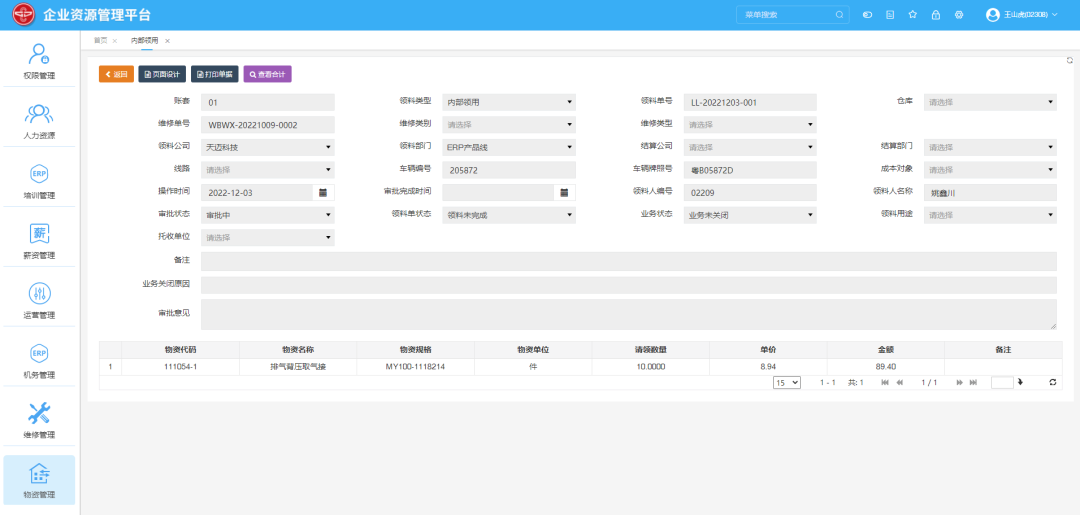Analysis of the Role and Digital Application of Enterprise Resource Comprehensive Information Management System in Enterprise Management
It has been a hundred years since the first tram was opened in Shanghai in 1908. Chinese public transportation enterprises have undergone more than 100 years of changes. As of the end of the last century, public transportation enterprises have always adopted the business policy of "elderly leading new people" and "experience management". With the requirements of national urbanization construction and the promotion of information technology reform, the number and scale of public transportation enterprises have been rapidly increasing. Traditional methods have become inadequate in daily management processes, and the use of information technology to control the gradually increasing personnel and vehicle information has become the most urgent need for the development of the public transportation industry< img src="/attachment/20241211/38fd718d2d6044b9994f22bcce55aaa1.jpg">
Since the concept of ERP was introduced into China more than 20 years ago, many public transportation companies have hoped to solve the problems of enterprise informatization development through ERP. Although there are many ERP software system brands in China, such as UFIDA and Kingdee, these systems are more inclined to be used by manufacturing and financial management enterprises and are not suitable for use by public transportation companies& nbsp;& nbsp;
The management of public transportation enterprises is centered on vehicle operation, focusing on the five basic core data of people, vehicles, yards, stations, and lines, ensuring complete monitoring of vehicle maintenance, accurate statistics of warehouse data, achieving cost accounting for individual vehicles, meeting the travel needs of citizens while reducing enterprise expenditure costs and increasing enterprise operating income. Therefore, when developing an ERP system for public transportation enterprises, the first consideration should be whether it meets the basic business management needs of public transportation. Secondly, it should meet the scalability needs of the enterprise from the architecture level, support the horizontal expansion of public transportation informationization, ensure the integrity and unity of basic data, and avoid the phenomenon of "data" islands. At the same time, a portal system should be built for the enterprise to reduce the complexity of login personnel to the enterprise informationization system and achieve unified management of the enterprise informationization system& nbsp;& nbsp;
Based on data fusion, Zhunyuan Network has developed a professional ERP management system for the operation and management of public transportation enterprises, namely the Enterprise Resource Comprehensive Information Management System. The Tianmai Enterprise Resource Comprehensive Information Management System focuses on the management, use, maintenance, and repair of vehicles, with units, routes, and vehicle models as entry points. It revolves around issues such as unclear rights and responsibilities, opaque processes, invisible information, non-standard work, and stagnant data within the public transportation enterprise. It integrates various businesses and resources within the enterprise into a unified system, clarifies enterprise rights and responsibilities, optimizes enterprise processes, shares enterprise data, transparently manages the enterprise, improves production efficiency, and ultimately enhances the competitive advantage of the public transportation enterprise

With the continuous application attempts of enterprise resource comprehensive information management systems, single scenario applications can no longer fully meet the management needs of enterprises. The application scenarios of multi system integration are gradually increasing, such as:& nbsp;& nbsp;
1. Statistical performance attendance, integrating the system with the scheduling system and safety control system. The system intelligently calculates driver attendance based on driver attendance and daily trips and mileage, improving the efficiency of salary accounting& nbsp;& nbsp;
2. Salary statistics, by integrating data from the system and station management system, can intelligently collect data on employee housing water and electricity expenses, reducing the workload of salary statistics& nbsp;& nbsp;
3. Scheduling operations, which integrate driver, vehicle, and other data with scheduling system data, can provide basic data support for the scheduling system to generate scientific scheduling plans& nbsp;& nbsp;
With the advancement of digital transformation construction in public transportation enterprises, the role of enterprise resource comprehensive information management system will also be further explored and applied. It will not only achieve enterprise informatization, paperless, and process oriented office, but also promote business upgrading through the integration of multiple systems, thereby achieving the goal of improving efficiency and reducing costs for enterprises
